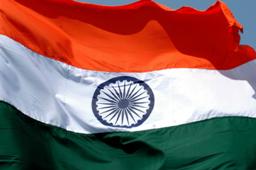 | « Back to article | Print this article |
 At the outset of the year 2013, India’s worsening macroeconomic parameters are a major cause of concern.
At the outset of the year 2013, India’s worsening macroeconomic parameters are a major cause of concern.
Latest data clearly showed that the current account deficit stood at a record level and the economic growth was stuck at a three year-low in the second quarter of the current financial year.
Besides, the Centre's fiscal deficit is poised to breach even the revised target in 2012-13 and industrial production is giving confusing pointers to economic growth.
As policy makers eagerly looked for signs of bottoming out, economists think there might be only a moderate improvement in the macroeconomic figures in the last quarter of the current financial year.
However, there is almost a unanimity that the Centre might not be able to control its fiscal deficit at the targeted level in 2012-13.
By November of 2012-13, the Centre's fiscal deficit was 80.4 percent of the Budget estimates (5.1 per cent of GDP).
If Budget projections of 14 per cent growth in nominal GDP is taken as correct, the deficit would account for 77 per cent of the revised target (5.3 per cent of GDP).
Remember, any downward revision in GDP numbers would magnify the fiscal deficit at a given level as a proportion of GDP.
The government had decided to rein in the fiscal deficit by allowing retailers to marginally raise the diesel prices every month, and to raise Rs 30,000 crore (Rs 300 billion) through disinvestment.
Finance Minister P Chidambaram had already stated that he is not counting on subsidies reduction because of diesel price corrections.
The government has so far raised close to Rs 7,000 crore (Rs 70 billion) from the stake sale in the public sector units.
“It is hard to estimate what the fiscal deficit would be at the end of this fiscal year, but it is likely to be 5.5 to 5.6 percent of the GDP.” said Soumya Kanti Ghosh, the director and head of economic affairs and research at Federation of Indian Chambers of Commerce and Industry.
In 2011-12, the fiscal deficit widened to 5.7 per cent of GDP against 4.6 per cent estimated in the Budget. Some economists, however think that the government should cut its expenses everywhere possible to rein in the fiscal deficit.
“The government should sharply cut expenses in order to control the fiscal deficit," said Ajay Shah, a Professor at the National Institute for Public Finance and Policy.
Economists believe that the current account deficit is more of a problem than the fiscal deficit, and advocate raising the import duties on gold to narrow the CAD.
The CAD in the June-September quarter of 2012-13 was at an all time high of 5.4 per cent of the GDP.
Though CAD is a bigger issue than the fiscal deficit because India does not have control over the global situation, CAD has not turned as alarming as it was in the 1991 balance of payments crisis due to capital inflows, felt economists.
Madan Sabnavis, chief economist, CARE ratings said, “In 1991, we had a current account deficit of 3 per cent of the GDP, and that resulted in a crisis.
“It is not likely to result in a crisis in 2013 because of the huge capital inflows. At the end of the year, the CAD is likely to come down to 4.5 percent of the GDP.”
There is a moderate improvement on the inflation front, but that is restricted to the wholesale-price inflation only.
The wholesale price inflation stood at its lowest in three years in December at 7.18 per cent compared to 7.24 per cent in November.
On the other hand, the consumer-price inflation which pinches the common man more, rose to a record of 10.56 per cent against 9.9 per cent in November.
This has dampened the earlier widely held expectations that the Reserve Bank of India would go for a rate cut in its January 29